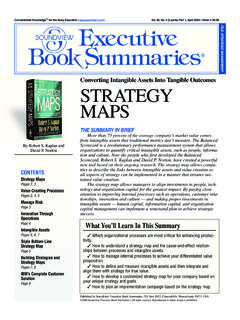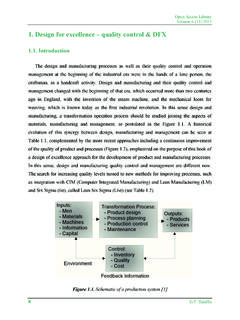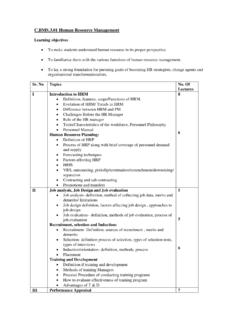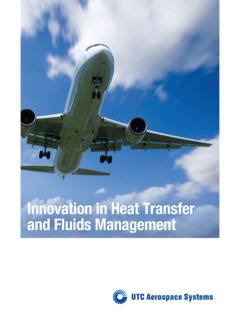Transcription of The Toyota Way - businesstraining.com.mx
1 Published by Soundview Executive Book Summaries, Box 1053, Concordville, Pennsylvania 19331 USA 2004 Soundview Executive Book Summaries All rights reserved. Reproduction in whole or part is Management Principles From the World s Greatest ManufacturerTHE TOYOTAWAYTHE SUMMARY IN BRIEFT oyota is the world s most profitable automaker. Its secret weapon islean production the revolutionary approach to business processes that itinvented in the 1950s and has spent decades perfecting. Today, businessesaround the world are trying to emulate Toyota s remarkable success byworking to implement the company s radical system for speeding up busi-ness and service processes, reducing waste, and improving quality.
2 It is asystem that is derived from balancing the role of people in an organization-al culture that expects and values their continuous improvements, with atechnical system that is focused on high-value-added flow. To help other companies learn to continually improve on what they do,Professor of Industrial and Operations Engineering at the University ofMichigan Dr. Jeffrey K. Liker describes the results of his year-long researchinto Toyota and its managers, executives, suppliers and training detailing the company s culture, processes and people, Liker providesreaders with a management model that can be used to transform businessacross industries, and the key principles that drive the techniques and toolsof the Toyota Production System and the management of Toyota in principles embody the long-term philosophy, processes, results, peo-ple.
3 Partners and problem solving that drive the organizational learning atToyota, and can make the Toyota Way work for any Knowledge for the Busy Executive 26, No. 12 (2 parts) Part 2, December 2004 Order # 26-30 CONTENTSU sing Operational ExcellenceAs a Strategic WeaponPage 2 How Toyota Became The World s Best ManufacturerPages 2, 3 Eliminating WastePage 3 Long-Term PhilosophyPage 4 The Right Process WillProduce the Right ResultsPages 4, 5, 6 Add Value By DevelopingYour People and PartnersPages 6, 7 Continuously Solving ProblemsDrives LearningPages 7, 8 Using the Toyota Way toTransform Technical andService OrganizationsPage 8 Build Your Own LeanLearning EnterprisePage 8By Jeffrey K.
4 Liker, : MANUFACTURINGWhat You ll Learn In This Summary How to foster an atmosphere of continuous improvement and learning. How to satisfy customers and eliminate waste at the same time. How to get quality right the first time. How to groom leaders from within rather than recruit them from the out-side. How to teach employees to become problem solvers. How to grow together with suppliers and partners for mutual benefit. Using Operational ExcellenceAs a Strategic WeaponToyota first caught the world s attention in the 1980s,when it became clear that there was something specialabout Japanese quality and efficiency.
5 Japanese carswere lasting longer than American cars and requiredmuch less repair. By the 1990s, it was apparent thatthere was something even more special about Toyotacompared to other automakers in Japan. It was the wayToyota engineered and manufactured the autos that ledto unbelievable consistency in the process and designed autos faster, with more reliability, yetat a competitive cost, even when paying the relativelyhigh wages of Japanese workers. Equally impressivewas that every time Toyota showed an apparent weak-ness and seemed vulnerable to the competition, Toyotafixed the problem and came back even , Toyota is the third-largest auto manufacturer inthe world, behind General Motors and Ford, with globalvehicle sales of over 6 million per year in 170 industry analysts estimate that Toyota will passFord in global vehicles sold in 2005, and if currenttrends continue.
6 It will eventually pass GM to becomethe largest automaker in the ReputationMuch of Toyota s success comes from its astoundingquality reputation. In 2003, Toyota recalled 79 percentfewer vehicles in the United States than Ford and 92 per-cent fewer than Chrysler. According to a 2003 study inConsumer Reports,15 of the top 38 most reliable modelsfrom any manufacturer over the last seven years weremade by Toyota Production System is Toyota s uniqueapproach to manufacturing. It is the basis for much of the lean production movement that has dominated manufac-turing trends for the last 10 years.
7 Lean manufacturing is afive-part process that includes defining customer value,defining the value stream, making it flow, pulling from the customer back, and striving for excellence. To bea lean manufacturer requires a way of thinking that focus-es on making the product flow through value-addingprocesses without interruption (one-piece flow), a pull system that cascades back from customer demand byreplenishing only what the next operation takes away atshort intervals, and a culture in which everyone is strivingcontinuously to improve.
8 How Toyota Became The World s Best ManufacturerThe most visible product of Toyota s quest for excel-lence is its manufacturing philosophy, called the ToyotaProduction System (TPS). TPS is the next major evolu-tion in efficient business processes after the mass produc-tion system invented by Henry Toyota now has more than 240,000 employ-ees around the world, in many ways it is still a large family business with considerable influence still exer-cised by the founding Toyoda family. To understand TPSand the Toyota Way, and how the company became theworld s best manufacturer, it is helpful to understand thehistory and personalities of the founding family memberswho left an indelible mark on the Toyota Toyoda was a tinkerer and inventor who grew upin the late 1800s and invented a sophisticated automaticTHE Toyota WAYby Jeffrey K.
9 Liker, THECOMPLETESUMMARYFor Additional Information on the author,go to: by Soundview Executive Book Summaries(ISSN 0747-2196), Box 1053, Concordville, PA 19331 USA, a division of Concentrated Knowledge Corporation. Published monthly. Subscriptions: $195 per year in ,Canada and Mexico, and $275 to all other countries. Periodicals postage paid at Concordville, PA and additional :Send address changes to Soundview, Box 1053, Concordville, PA 19331. Copyright 2004 bySoundview Executive Book ailable formats:Summaries are available in print, audio and electronic formats.
10 To subscribe, call us at1-800-521-1227 (1-610-558-9495 outside and Canada), or order on the Internet at discounts and Corporate Site Licenses are also Book Summaries DEBRAA. DEPRINZIO Art and DesignCHRISLAUER Senior EditorCHRISTOPHERG. MURRAY Editor in ChiefGEORGEY. CLEMENT PublisherSoundview Executive Book Summaries 2 The author:Jeffrey K. Liker, , is professor ofindustrial and operations engineering at the University ofMichigan, and co-founder and director of the JapanTechnology Management Program and LeanManufacturing and Product Development CertificateProgram at the university.











